France 2013 - Day 2 - Cognac to Armagnac
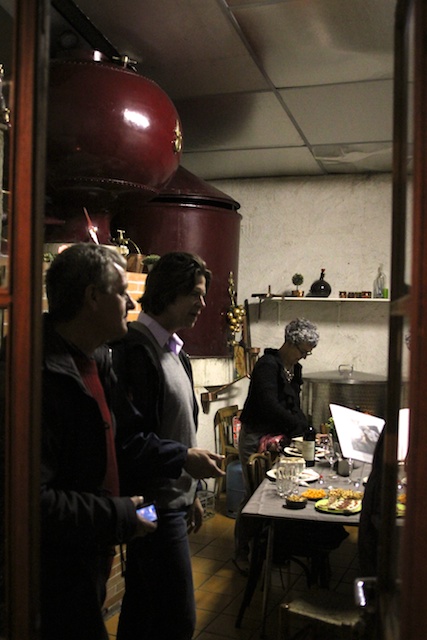
Wow. So much has happened in the past twenty-four hours that I'm not sure I'll be able to go into the level of detail I would like, so I'll have to summarize as best I can. We pulled into the Dudognon house yesterday evening for a wonderful dinner appointment, complete with table setting and meal in front of their small alambic still. We've been here before, so there was no need to take a tour of the grounds, just enjoy the company of the wonderful couple and have some great food: mushroom soup, rabbit stew, and a few bottles of wine. Oh....and some Cognac.
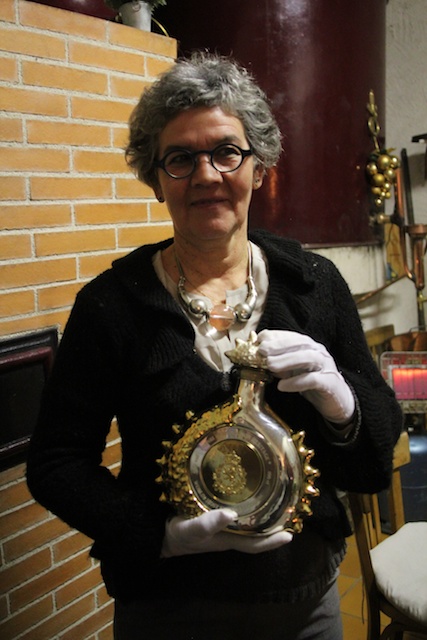
If you read the blog last January when we visited Dudognon then you'll know they're one of the few producers in the region that does not color their brandy with caramel or add boisé – a substance made with water, sugar, oak chips, and sometimes Cognac to both darken and sweeten the flavor. The result is a light-colored, light-bodied, unadulterated style of spirit that is unlike any other we've tasted in Cognac. Because of its delicate nature the brandy from Dudognon takes at least twenty years in the barrel before wonderful things start happening. Like fine wine, there is no way to speed up the maturation process. You can add all the new oak, sugar, and artificial flavors you want, but it's not going to help. Ironically enough, a foreign client wanted to buy some ancient Dudognon spirit to create his own brand called "The Most Expensive Cognac in the World." You can see the bottle he used above. He charged a ton of cash for what is probably the least accessible Cognac in production because it absolutely isn't what people expect from most Cognac. Couldn't he have found some coffee-colored, oversweet cheap stuff for that gold and diamond-covered flask? Not that Claudine is complaining!

Unlike last year, this time we'll probably be purchasing some mature Cognac direct from the Chateau. The Reserve des Ancetres is a 20+ year old blend that showcases the purity of fruit found in both Grande Champagne and Dudognon expressions with enough richness to please most general palates. I think everyone will be quite pleased.
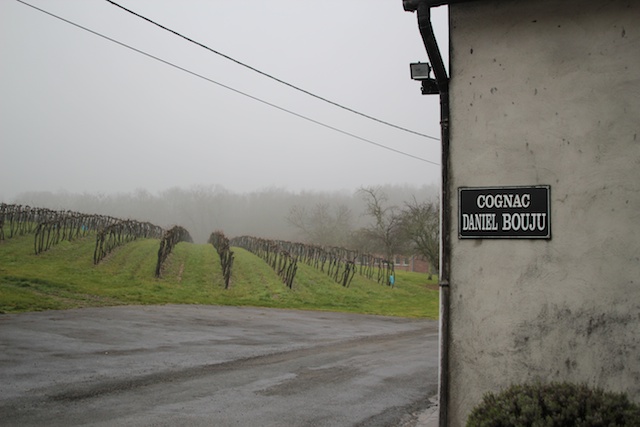
After a late night we woke up early for our appointment with Daniel Bouju – a producer in the region we heard was bottling cask strength brandy without caramel. We were very excited.
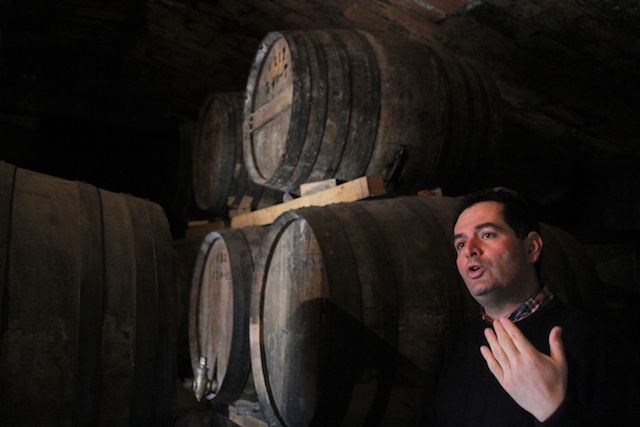
Francois Bouju is the man running the show these days. He's incredibly nice, knows a lot about distillation, taught me a great deal about the region and its wines, and impressed me beyond any expectation I had going in.
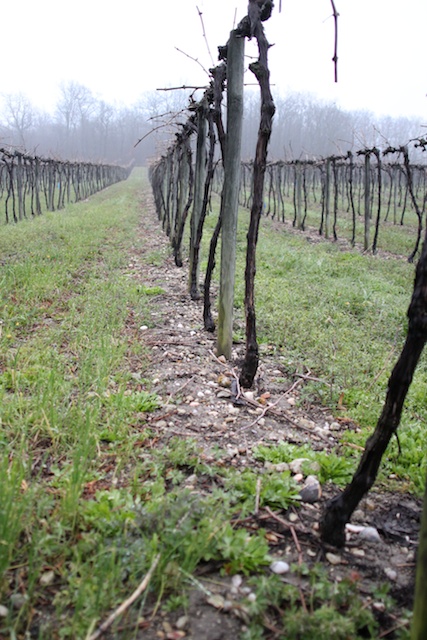
His vines are planted in the best soils – rich limestone which helps to preserve acidity in the fruit – and he is a stickler for detail. The reason the Grand Champagne region makes what is considered the best Cognac is because the soil creates grapes that are fully ripe with high acidity levels and low alcohol. This is important because distillation is about concentrating the flavor of a base substance. If you've got a wine sitting in a tank oxidizing, you're going to have an oxidized flavor in the Cognac. High acidity levels help prevent oxidation while distillation is taking place and prevent the need for stabilizing sulfur (none of us want to taste a distilled fart). At the same time, you need wine with a low alcohol level as to not overpower the flavor of the fruit. Full ripeness is also necessary to have any flavor at all. You can't simply pick early to preserve acidity because your wine will taste terrible.

The first Cognac we tasted was a pure, clean, fruity, five year old brandy that showcased everything we had heard Francois talk about earlier. This spirit proved that he knew how to make brandy. It was the next ten Cognacs, however, that had us scratching our heads. Dark, black, sherry-colored ten year olds with little richness covered the table on a tray with clean glassware. "This color comes from the new oak, which our Cognac spends the first year and half in," he told us. Bouju doesn't use caramel coloring, but we know that most people are still doing so. It seems that the use of caramel coloring or boisé has become the PED of the Cognac world. Everyone uses it, but everyone denies that they do! You can't blame them, really. Their booze simply doesn't taste all that great in its youth unless you've either done something masterful or expensive, so it's harder to sell until older. However, why bat .250 with 10 HRs and 50 RBIs when you can win the Triple Crown in your rookie year? It was quite a disappointment to say the least. However, we were very impressed with the young, less-manipulated spirits so we'll likely be bringing those in to K&L. For the price, there's very little than can compete with this guy.
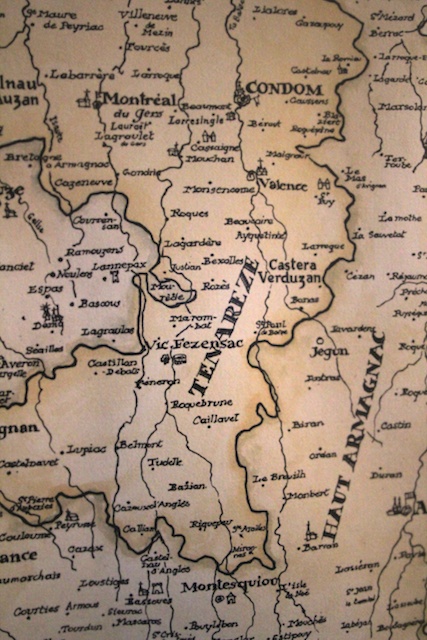
After Bouju we made the three hour drive through Bordeaux down to Armagnac – the Tenereze region in particular.
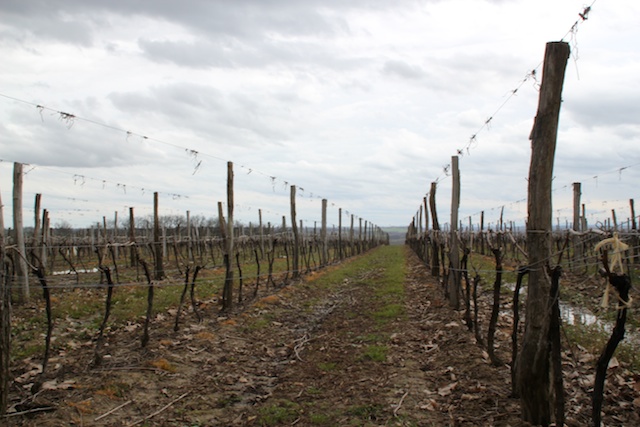
Driving up the road to Pellehaut you pass through the vineyards of Folle Blanche leading up towards the main facility. Today the air was clear and, although I couldn't capture it in the photo, you could see all the way to the Pyrenees with their snow-capped peaks.

Pellehaut is a large producer of Gascogne wine and has quite a modern tasting bar with lots of different spirits as well. Again, we had visited the site last January so we didn't need to bother with a detailed tour. We simply needed more Armagnac to supplement our outrageously good 1973 selection (currently sold out but on reorder).

One of the most surprising selections was a new blend of young Folle Blanche brandies called the L'Age de Glace or "the ice age." I didn't realize that was the translation so I said stupily, "You know, this would taste really good on the rocks!" Duh, said Charles and David, hence the name. This might get down to the sub-$30 range if we can make a deal. It's quite fruity, fragrant, and clean, and would make a much better Sidecar or French 75 cocktail than an oversweet, boisé-laden brand selection would. Hopefully we can make this happen.

After Pellehaut, Charles told us he wanted to try meeting up with a very small farmer with a property called Pouchégu. The driveway led beyond a small hill towards a rustic country estate.
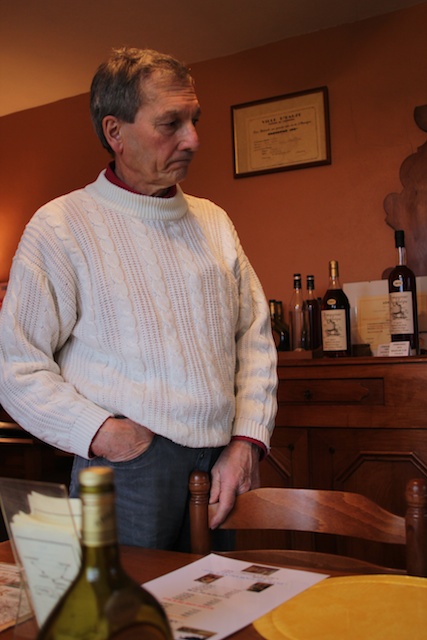
Pierre Laporte is about done distilling brandy at Pouchegu. He doesn't own a still, choosing to hire a traveling distiller who drives one up to his property, and feels he probably has enough stock to retire on at this point. What's left is absolutely magnificent. Rich, powerful, structured Armagnacs that bring the goods with every sip. The packaging is also fantastic.
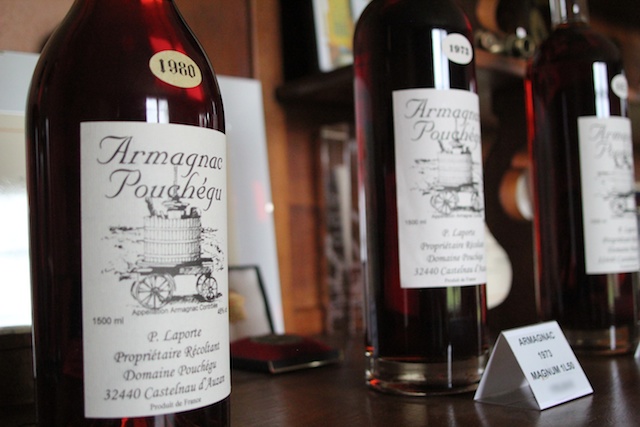
The 1986 and 1973 vintages from Pouchegu were the most impressive of the lot and we told Pierre we wanted this beautiful white labels on the bottles. The 1986 was supple, dark fruited, brimming with cocoa and full of spice. It went on forever. The 1973 was like a Parker's Heritage Bourbon with huge spice and powerful alcohol. We were instantly hooked.
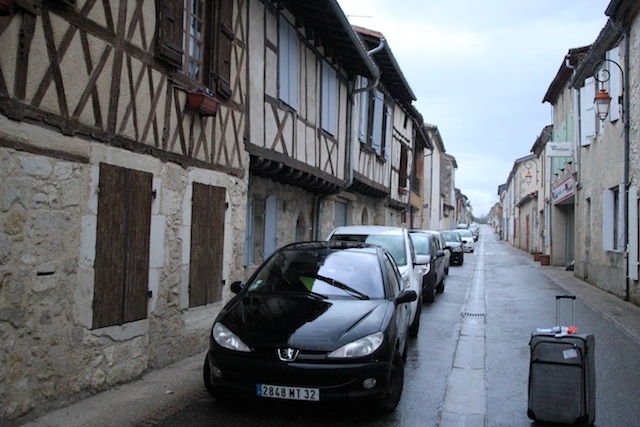
From there it was on to Montreal where my lost suitcase was waiting for me! We went into town and had a three hour dinner, but now I'm back at the hotel typing this up and answering emails. Since I don't speak French I'm letting Charles and David do the socializing. It's also midnight right now and my eyes are closing as I type this.
More tomorrow!
-David Driscoll
